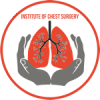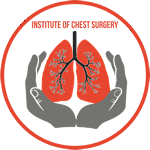Bronchiectasis is a chronic respiratory condition characterized by the irreversible widening and damage of the airways in the lungs. The accumulation of mucus in these enlarged airways can lead to recurrent lung infections, difficulty breathing, and reduced lung function. Managing bronchiectasis effectively requires a comprehensive treatment approach, and one vital aspect of this strategy is airway clearance therapy. In this in-depth blog post, we will explore the significance of airway clearance therapy in bronchiectasis treatment, its benefits, techniques, and how it improves the quality of life for individuals living with this condition.
Understanding Bronchiectasis and Its Impact
Before delving into the importance of airway clearance therapy, let’s briefly review bronchiectasis and its effects on the respiratory system.
1. Bronchiectasis
Bronchiectasis is a chronic lung condition in which the bronchial tubes become permanently damaged and widened. The damaged airways lose their ability to efficiently clear mucus, leading to its accumulation and providing an ideal environment for bacterial growth. This, in turn, results in recurrent lung infections and inflammation.
2. Symptoms and Impact
Bronchiectasis is characterized by symptoms such as chronic cough, excessive mucus production, shortness of breath, and recurring respiratory infections. Over time, the condition can lead to reduced lung function and a lower quality of life for those affected.
The Role of Airway Clearance Therapy
Airway clearance therapy (ACT) is a crucial component of bronchiectasis treatment, aimed at facilitating the removal of mucus and foreign particles from the airways. By clearing the mucus, ACT helps to prevent lung infections, improve lung function, and reduce the frequency and severity of exacerbations. ACT is particularly beneficial for individuals with impaired mucociliary clearance, which is a natural mechanism by which the lungs clear mucus and debris.
How Does Airway Clearance Therapy Work?
Various techniques are used in airway clearance therapy, each with its own benefits and suitability for different individuals. Here are some commonly employed airway clearance techniques:
1. Chest Physiotherapy (CPT)
Chest physiotherapy involves specific manual techniques performed by a respiratory therapist or caregiver. Techniques such as percussion, vibration, and postural drainage help dislodge mucus from the lungs, allowing it to be coughed up and expelled more effectively.
2. Positive Expiratory Pressure (PEP) Devices
PEP devices are handheld devices that create resistance during exhalation. This resistance helps to keep the airways open during exhalation, preventing mucus from getting trapped and promoting better clearance during coughing.
3. High-Frequency Chest Wall Oscillation (HFCWO)
HFCWO devices use gentle, rhythmic vibrations to loosen and mobilize mucus, facilitating its removal from the airways.
4. Autogenic Drainage
Autogenic drainage is a breathing technique that involves controlled inhalation and exhalation at different lung volumes. This technique helps individuals control airflow within their airways to promote mucus clearance.
Benefits of Airway Clearance Therapy in Bronchiectasis Treatment
Now let’s explore the key benefits of airway clearance therapy in managing bronchiectasis:
1. Improved Mucus Clearance
ACT assists in breaking up and mobilizing the mucus trapped in the widened airways, making it easier to cough up and expel. This prevents mucus accumulation, reduces infection risk, and improves lung function.
2. Prevention of Respiratory Infections
By effectively clearing mucus and bacteria from the airways, ACT reduces the risk of recurrent lung infections, which are common in bronchiectasis.
3. Reduced Exacerbations
Regular airway clearance therapy has been shown to decrease the frequency and severity of exacerbations, leading to a more stable respiratory condition.
4. Enhanced Lung Function
ACT helps maintain optimal lung function by keeping the airways clear, allowing for better oxygen exchange and improved breathing.
5. Improved Quality of Life
With better lung function, reduced infections, and fewer exacerbations, individuals experience an overall enhancement in their quality of life.
Incorporating Airway Clearance Therapy into the Treatment Plan
Effective airway clearance therapy is dependent on various factors, including individual preferences, disease severity, and the patient’s physical abilities. Healthcare providers work closely with patients to determine the most suitable airway clearance techniques and develop a personalized treatment plan. Regular monitoring and adjustments to the therapy ensure it remains effective and meets the patient’s changing needs over time.
Conclusion
In bronchiectasis treatment, airway clearance therapy plays a pivotal role in managing symptoms, preventing infections, and improving overall lung function. By assisting in the removal of mucus and preventing its accumulation in the damaged airways, ACT significantly enhances the quality of life for individuals living with this chronic respiratory condition.
If you or someone you know has bronchiectasis, consider discussing the incorporation of airway clearance therapy into the treatment plan with a healthcare professional. ACT, in combination with other bronchiectasis management strategies, can lead to better lung health and a more fulfilling life for those affected.







